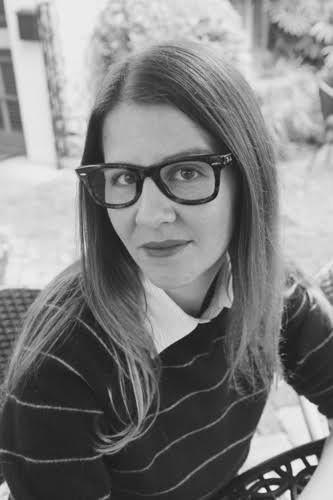 Feel? Let the reader feel!
Feel? Let the reader feel!
—Fernando Pessoa
James Merrill, Richard Wilbur, David Kalstone, and a couple others were once at Merrill’s house in Key West when they each decided to write a poem that morning. When Merrill came downstairs to show his work, Wilbur said, “Well, Jimmy, it’s very fine—very formally sound, it’s just… missing something.”
“Oh right,” Merrill said, “I forgot to put in the feelings!” He raced upstairs, and, in another hour or so, doctored his poem. He then read the new version to the delight of all.
I remembered this anecdote while down in Tucson a few weeks ago, attending the UA Poetry Center’s Bagley Wright Lecture Series. Timothy Donnelly made a comment that’s stuck with me; he claimed he was more of a “constructivist” poet, as opposed to an “expressivist” poet, meaning that he often didn’t have anything particular to say—he just liked building things, tinkering, working with the materials of his chosen medium. Constructivists, like Merrill and Donnelly, can sometimes forget to put in the feelings.
The impulse of a constructivist is to make patterns. Three rocks scattered in the woods might not seem significant, Donnelly said, but three rocks stacked in a cairn do. We observe the imposition of human consciousness. However, we don’t necessarily know what such patterns signify—turn left, straight ahead, or look out for the poison oak. Likewise, in poetry, patterns create music and architecture, arrangements which suggest mood and sensibility: penumbras inflecting and leaching out into the tone, the heft, the configuration of a poem beyond its ostensible content.
Expressivists, on the other hand, tend to have something specific to convey. Language acts as a medium of communication by means of which the author’s ideas, experience, or emotions can be transferred to the reader. An expressivist poem is thus a more chiseled version of the way we use language in everyday life. In some cases, it strives for a message, a moral, and it has designs to incite political action.
Every poet, perhaps every poem, must figure out how to reconcile these divergent motives. The results of this balancing act contribute to one’s style. Although there are limitations to this (or any) binary, Donnelly’s distinction proves useful in observing a trend and unpacking the forces behind it: American poetry is having an expressivist moment.
In the ’90s and 2000s, the pendulum swung away from the Confessional poets. New Formalists and LANGUAGE poets, New York Schoolers and Ellipticals alike could be deemed constructivists while Slam poetry, as an example of expressivist work of that era, infrequently saw the pages of literary journals. One might argue, too, that the immediacy of Slam poetry is suited for the voice and stage, rather than the drier archival pages of journals anyway.
Today’s poetry scene, with journals now mostly online and many hosting video content, values immediacy. Expressivist poems appear urgent, direct, sincere, visceral, approachable, and woke. They’re bone spurs and gut-punches, shivers and fist bumps. Constructivists poems, by contrast, will always have critics who accuse them of being empty, academic, confusing, oblique, or baroque. Constructivist poems can be ponderous, requiring interpretation and repeated readings, though a handful of constructivists have developed enough panache or sprezzatura to avoid this fate. A certain elitism prevails among constructivist poets, since their work, whether harnessing traditional modes or disrupting them, appeals to what Milton called a “fit audience… though few.” They require the reader to pick among the stones they’ve set and wander in the runes, as it were. The reader must construct and deconstruct along with them.
That said, the expressivist poem, so popular currently, faces the dangers of being obvious, too literal, a tad boring, blunt and underwritten, and ultimately little more than dressed-up journalism. Expressivists foreground the author over the work. Thus, expressivists can develop hang-ups about authenticity. An expressivist poet may fall to repeating herself, boxed in by her own voice, the work shrinking to the size of a single viewpoint instead of expanding to encompass the multiplicities of the imagination.
The trend toward expressivists might, of course, result from a political climate in which readers are spoiling for poems that give voice to their anger and disorientation, as well as greater institutional awareness and efforts to expand the variety of perspectives represented at all levels of publication. Also, poems that spill their guts might rise to the top of slush piles: blood floats on ink. Busy editors sometimes just don’t have time to re-read and interpret delicate, challenging, or more subtly structured work before casting it aside in today’s clamorous marketplace.
A counterargument to my own analysis above, however, is the state of creative nonfiction (CNF) today. CNF has been trending more constructivist lately. The heyday of the echt memoir was the 90s and early 2000s—think Mary Karr, Frank McCourt, James Frey. As opposed to straight narrative, today’s CNF is lyrical, collaged, broken, braided, collated, curated, speculative, or anagogical: it emphasizes its structure and shifting registers and embedded texts; it’s by turns hermetic and punchy, colloquial and precious, erudite and rude. Given this newfound stress on form, and the play that form affords, essays are increasingly like poems—at least, poems with a constructivist bent—and it’s no accident that many of our major essayists are bona fide poets: Maggie Nelson, Ander Monson, Anne Carson, John D’Agata, Kevin Young, Lia Purpura, Nick Flynn, and Claudia Rankine, to name just a few.
This tendentious bifurcation between “constructivists” and “expressivists” aside, as writers we should perhaps recognize that all expression must be constructed; all construction yields some expression. So, writers whose temperament is mushy might benefit from thinking how to give shape and definition to their sentiment through more attention to structures, logics, forms, and outward facts. And those, like myself, who tend to dawdle over form for form’s sake, need to circle back to ask: What am I bothering to say? Does it matter? And, importantly, am I giving my reader the feels?
 I know how I used to write, or at least I think I know. We have patterns to our work, stories shaped by our interior lives. This is not to say we’re writing our personal experiences into fiction (though sometimes we are), but our personal experiences inevitably guide how we create characters. We plumb those depths over and over again, looking for the heart of things, the messy place where the real shit lives. I find myself moving toward writing that displays an action – generally something embedded in the body. Enamored with the physical, I am constantly looking for a way to center ripeness of feeling in these movements. I like to see movement. I want to know how things hurt. Their sharpness. The ache of a bruise.
I know how I used to write, or at least I think I know. We have patterns to our work, stories shaped by our interior lives. This is not to say we’re writing our personal experiences into fiction (though sometimes we are), but our personal experiences inevitably guide how we create characters. We plumb those depths over and over again, looking for the heart of things, the messy place where the real shit lives. I find myself moving toward writing that displays an action – generally something embedded in the body. Enamored with the physical, I am constantly looking for a way to center ripeness of feeling in these movements. I like to see movement. I want to know how things hurt. Their sharpness. The ache of a bruise.